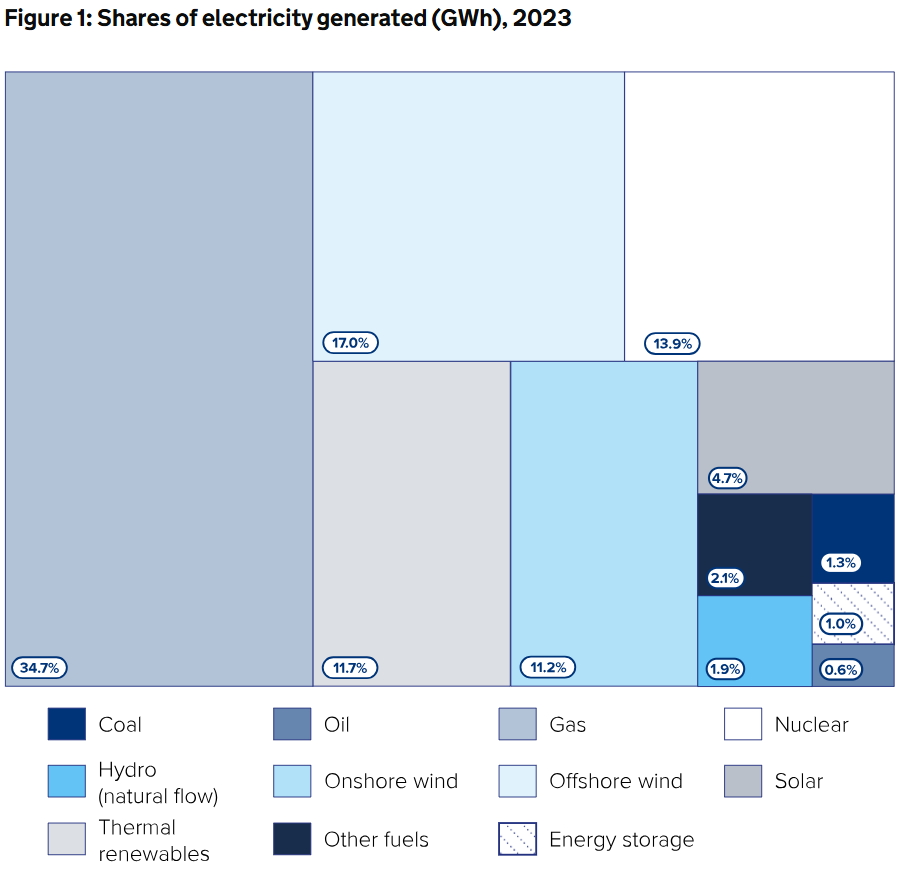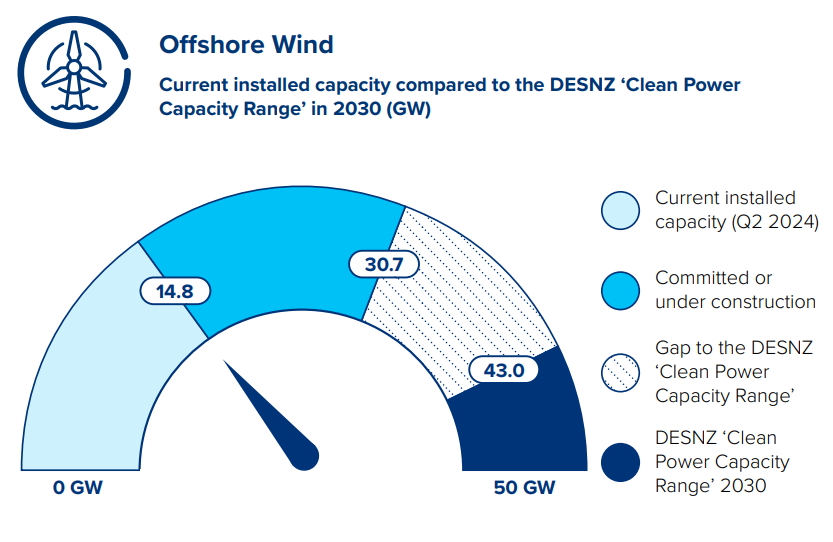Electricity from renewable sources and nuclear power will be the foundation of the UK’s electricity system by 2030, according to a new action plan released by the UK government in December 2024. Offshore wind, currently contributing 17% to the country’s electricity, is highlighted as crucial for the clean power system, with steps to facilitate offshore wind farm development before the next Contract for Difference (CfD) round.
The action plan, issued by the Department for Energy Security and Net Zero (DESNZ), was presented by UK Energy Secretary Ed Miliband on 13 December as a “major milestone to deliver on the Prime Minister’s Plan for Change aimed at driving economic growth.”
The Clean Power 2030 Action Plan outlines a roadmap to a predominantly clean power system in the UK by 2030, with clean sources comprising 95% of electricity generation and gas limited to 5%.
“Unabated gas will continue to serve as a backup during the transition to clean power, ensuring supply security.” The plan states that 35 GW of gas capacity will be maintained through 2030.
In 2023, gas accounted for 35% of the UK’s electricity generation, with offshore wind as the second-largest source at 17%, followed by nuclear at 14%.

The UK government aims to make renewable energy, particularly offshore wind and nuclear, central to the 2030 energy mix, targeting 43-50 GW of offshore wind capacity. The UK currently has 14.8 GW of offshore wind, with an additional 16 GW contracted or under construction.
“The government will aim to secure at least 12 GW across the next 2 to 3 allocation rounds – AR7, AR8, and possibly AR9,” states the DESNZ report.

The government will introduce reforms to the Contracts for Difference (CfD) mechanism, expected before Allocation Round 7 (AR7). One reform is to relax eligibility for fixed-bottom offshore wind farms, enabling projects without full planning consent to participate.
“This could improve competition and allow earlier supply chain engagement,” according to the action plan.
The government plans to revise the criteria for informing the final budget for fixed-bottom offshore wind, avoiding issues seen in AR5. Other reforms include an auction schedule with capacity goals for upcoming rounds and a review of auction parameters, including Reference Prices.
Original Story at www.offshorewind.biz
